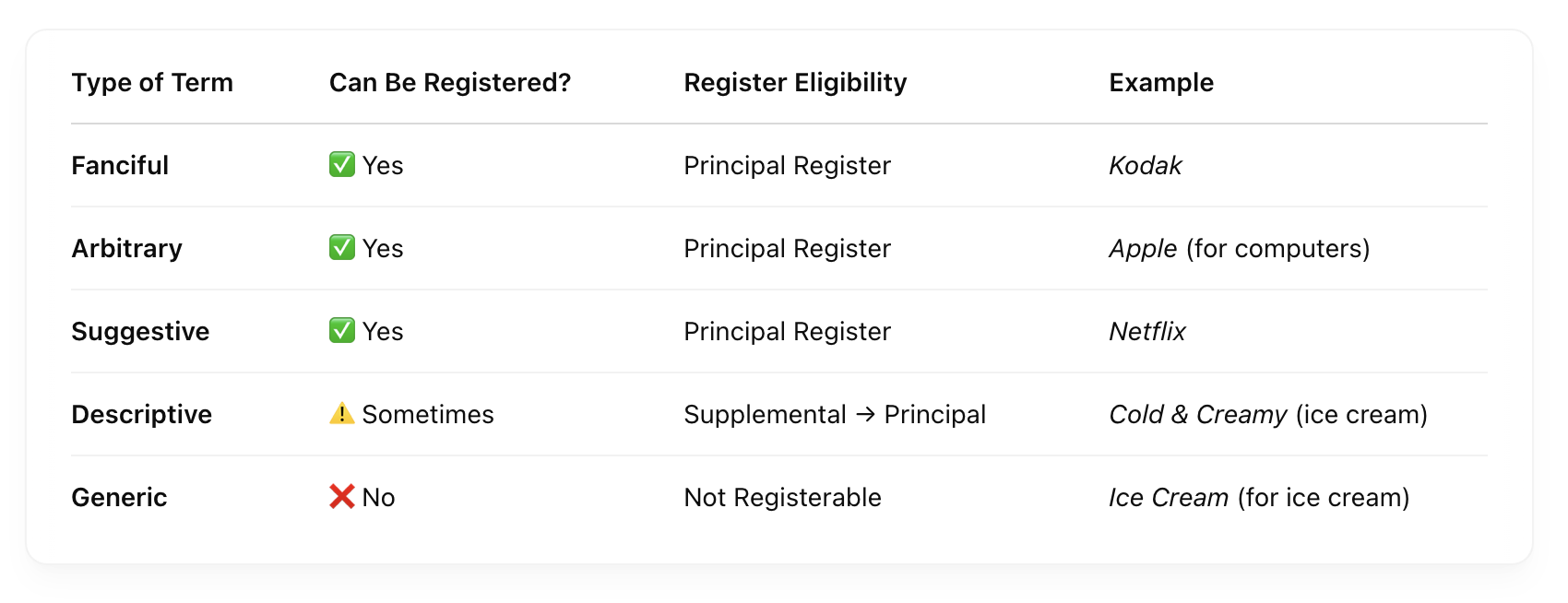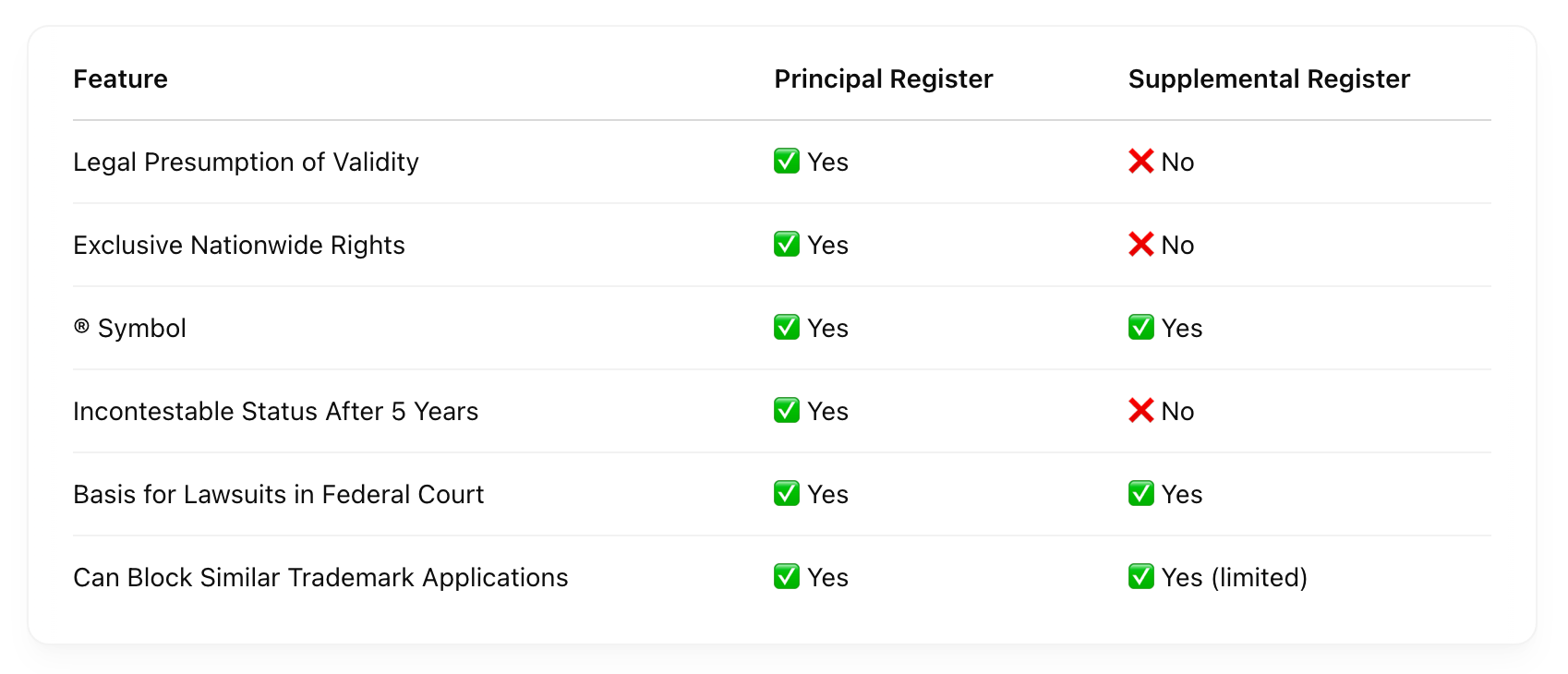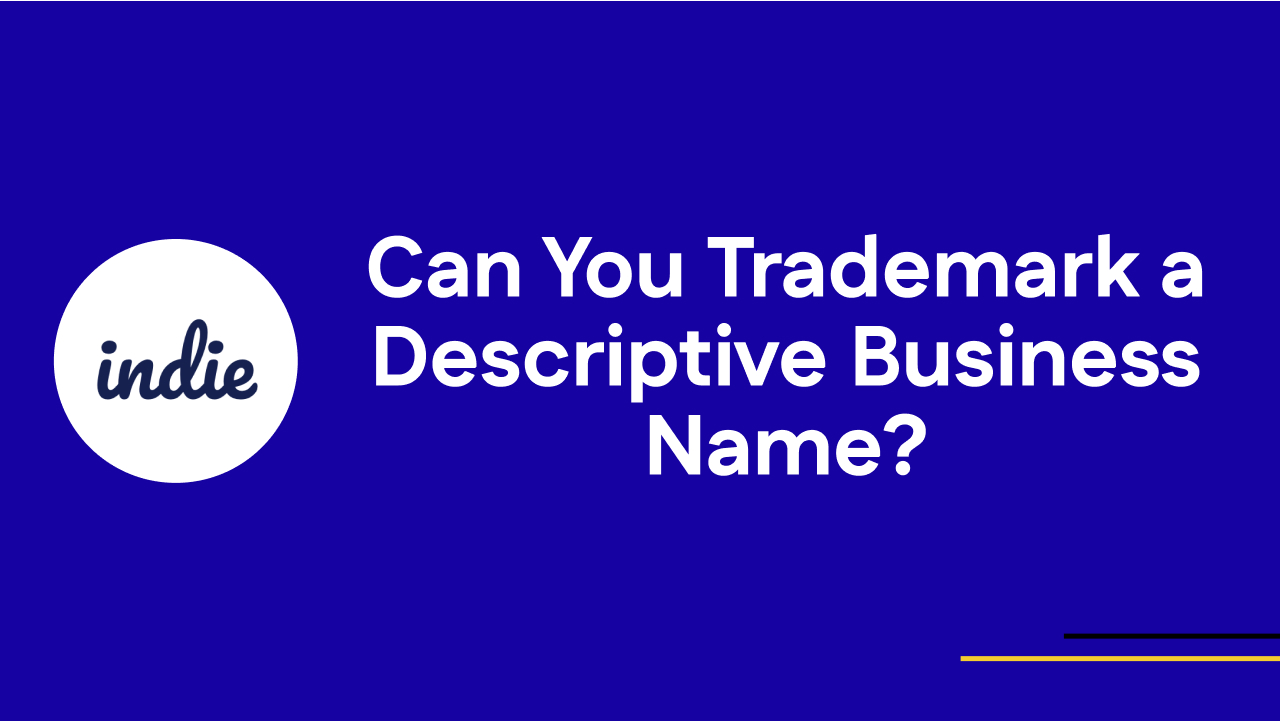Understanding the Principal vs. Supplemental Register—and Why Generic Names Just Don’t Work
When launching a brand, one of the first questions many business owners ask is: Can I trademark my business name—even if it’s kind of descriptive? The answer depends on how unique your name is and whether it falls into the descriptive or generic category.
In this guide, we’ll break down the difference between descriptive and generic trademarks, explain how the Principal and Supplemental Registers work, and help you understand what kind of name gives you the strongest legal protection.
What Is a Descriptive Trademark?
A descriptive trademark tells people what your product or service is, what it does, or one of its key features. For example, “Cold and Creamy” for an ice cream brand describes exactly what the product is like.
Descriptive trademarks are not considered unique enough for full protection at first—but they can become eligible for stronger protection over time.
What Is a Generic Term?
A generic term is the common name for a product or service. For example, “Ice Cream” for a brand that sells ice cream is a generic term. It’s the word everyone uses to describe that type of product—so you can’t claim it as your own.
Legally, generic terms can never be protected as trademarks. You can’t register them with the United States Patent and Trademark Office (USPTO), not even on the Supplemental Register.
Descriptive vs. Generic: What’s the Difference?
This legal distinction is critical. Here’s a simple breakdown:

Key takeaway: Descriptive marks may be registered (starting on the Supplemental Register), while generic terms never can be.
Why Descriptive Trademarks Go on the Supplemental Register
When you apply for a trademark, the USPTO will determine whether your name is distinctive enough for the Principal Register, or if it must go on the Supplemental Register.
Descriptive trademarks usually get placed on the Supplemental Register because they aren’t considered unique at first. However, they can gain distinctiveness over time—especially if you’ve used the name in commerce for several years and can prove that customers associate it specifically with your business.
Principal vs. Supplemental Register: What’s the Difference?
Here’s a breakdown of the two federal trademark registers and how they compare:

The Principal Register offers strong benefits like nationwide exclusivity and easier enforcement in court. Meanwhile, the Supplemental Register provides moderate protection—it helps you claim ownership and may deter others from using your brand, but you’ll need more evidence in legal disputes.
Can a Descriptive Trademark Move to the Principal Register?
Yes! If your descriptive trademark gains enough “acquired distinctiveness” over time—meaning that consumers now recognize it as tied specifically to your business—you can later reapply for the Principal Register.
A few ways to prove this include:
- Long-term use in commerce (usually 5+ years)
- Substantial advertising and promotion
- Customer surveys or market recognition
This upgrade is common as your brand grows.
How to Avoid the Supplemental Register: Choose a More Distinctive Name
If you want stronger protection from day one, your best bet is to pick a more distinctive trademark. Here’s how different types of trademarks rank by strength:
- Fanciful: Made-up words (e.g., Xerox, Kodak)
- Arbitrary: Real words used in unrelated industries (e.g., Apple for computers)
- Suggestive: Hints at qualities or traits (e.g., Netflix for internet movies)
Pro Tip: A suggestive trademark offers a great balance—it’s easier for customers to understand than a made-up word but still strong enough for Principal Register protection.
Is It Bad to Be on the Supplemental Register?
Not necessarily. It depends on your goals:
- If you’re a small business just looking to claim rights and avoid rebranding, the Supplemental Register can give you peace of mind.
- If you plan to enf

